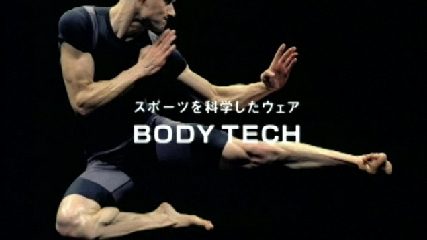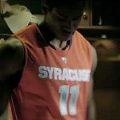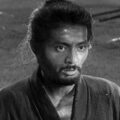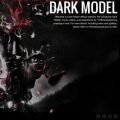(This was reprinted from the article I had written on Model Electronic blog, on Nov 4, 2011.)
Contents
Uniqlo’s “Body Tech” campaign
In this post, I’d like to explain “How to Find What to Solve” by referring to specific advertising reels in which I got involved. This time, I would like to talk about a campaign by Japanese apparel company Uniqlo to promote their sportswear brand, Body Tech. What I did for this campaign could be sound design rather than music composition.
Fortunately, when I had the first meeting with the project team, the creative director gave me an almost completed storyboard and a clear visual concept of the advertising film. That helped me avoid a “shot in the dark” approach and focus on what I really should do.
At the early stage, we concluded that we shouldn’t embed a musical piece all throughout the film but place sound elements that are accurately synchronized to it. We thought that approach could add a sense of tension to the visual elements and help the campaign’s target (= those who get physical activity or jobs, including athletes) concentrate on the message they would like to convey. Hopefully, they will be appropriately interested in this product.
Before I go on to the details, I would like to provide a list of “Several levels of Issues” discussed in the previous post.
Level-2: Issues the client has intrinsically and extrinsically when they work on solving the Level-1.
There are various issues, ranging from marketing issues such as branding, share, competitors, and distribution to management ones such as resources and stockholders (IR).
Level-3: Issues the advertising project team (including client, agency, and creative team) has.
Examples: relationship with the client, budget, schedule, key person, politics (about not limited to the team itself but including the cast and their agency), and ulterior motives such as awards and tie-in promotion.
Level-4: Issues the creative team has.
There are various issues at Level-4, ranging from the production budget and schedule to the production style, the timing/season of on-air, and the environment for music (e.g., hiring outside musicians/orchestra). Other Level-4 issues could include the creative team’s understanding of the brand’s identity, the alignment of the music with the visual elements, and the overall emotional impact of the music on the audience.
Issues Level-2 & Level-3
Regarding this campaign, we hardly needed to consider Level-3 because the team (agency, creative team, etc.) had already received great credit from the client. Also, regarding Level-2, Uniqlo had already become the dominant brand in the apparel market in Japan, and almost all Japanese knew who they were and what kind of clothes they were selling.
Having said that, at that time, most people still would regard Uniqlo as one of the typical domestic companies of SPA (Specialty store retailer of Private label Apparel) and lump the company in with overseas brands such as GAP. While its customers appreciated its “high-quality and low-price” product line, they still didn’t have a deep understanding of its spirit of innovation or its progressive (or even sublime) vision. This product, however, was not an ordinary casual outfit but a highly functional sportswear that had been strategically developed with the aid of sports scientists and professional athletes. So, we needed to close the perception gap. That was the Level-2 issue.
Actual issue Level-2
Considering Level-2 more, competitors of this product are technically not (only) other SAP brands but sports brands such as Nike, Puma, Mizuno, Asics, Descente, etc. And, of course, most of them had already developed their product lines by applying sports science (although there were no directly competitive products from these companies at the same time).
So, what we should care about at Level-2 was avoiding a head-to-head fight with them and following their advertising cliche. Instead, we should convey their message strategically by leveraging the client’s strengths while being conscious of its existing/potential customers.
Issues Level-4 & Level-1
Fortunately, we already had a solid brand world/asset in advertising (i.e., tone and manner) accumulated through Uniqlo’s abundant past campaigns. It was easy to extract the elements from the asset and capitalize on them (by the way, the creative director of this campaign had been involved in Uniqlo’s brand building since the late 90s).
We focused on creating a new perspective of “Sports Science” and adding freshness to Uniqlo’s existing brand world. We added a distinct, functional concept called “Motion, Beauty, and Comfort” as an extension of their basic manner of communication.
From the reel, you can see that it is different from advertising campaigns of typical sports brands such as Nike in terms of how we articulate product “functions” and benefits. Our message is in contrast to their emotional and often motivational approaches (such as “Just Do It”), not to mention the difference from general apparel advertising campaigns. In this sense, this reel is very sincere about coping with the issues Level-1.
How I Solved it with Sound
Let’s delve into the story of sound design. As you’re aware, this reel focuses on four aspects of the message: three for the product functions and benefits (Compression, Taping, Dry) and one for the main concept. My task was to ensure the audience’s attention was drawn to each focus, creating a sizzling atmosphere that could grip potential users, and making the reel stand out in the sea of advertising spots.
Speaking of “drawing attention with sound,” I think there are two methods of doing that:
1. putting a sound
2. putting a “silence” (or stopping a sequence).
While the ‘putting a sound’ method is effective with attack sounds, I find the ‘silence’ method more practical. It’s a reliable way to make the audience notice ‘something different.’ The more sounds you add, the less impressive it tends to become, contrary to expectations. This practical approach ensures the audience’s attention is always on the message.
For this reel, I devised a unique ‘play and pause’ approach to draw attention to the product functions and message. The sound sequence, featuring human breath & stopwatch as symbols of exercise, and an intake of breath & reverse EFX as symbols of a pause, was repeated three times. This allowed the audience to grasp and hopefully memorize each function in a compelling order. The choice of edgy, solid, and dry sound elements, except for the human breath, was to enhance the concept of ‘Sports Science Wear’ and match the futuristic mood of the clip.
This “play and pause” method would be widely applicable when you want to let the audience pay attention to something essential/different (i.e., message, attention, etc.). It would work even if you replaced this set of edgy sounds with another one, along with the tone and manner of your project.






